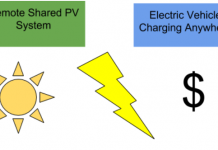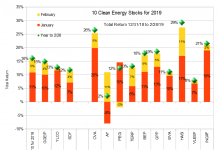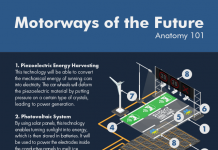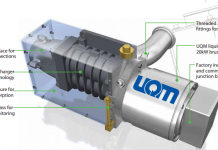On January 13th, I posted some speculations about how many people really want an Electric Vehicle that can go 400 miles without having to recharge. It was only a little over a week ago, but in the few days since then we’ve learned that what I used to call a "Plug-in (Series) Hybrid Electric Vehicle" (PHEV) is now called a "Range Exteneded Electric Vehicle" (REEV.) How quickly times change.
I also posted a poll to test my speculations at the end of the article. I asked about the Aptera, which will be offered in both EV and "REEV" versions: Would be willing to pay the extra $3,000 it is likely to cost for the REEV, and would they have another vehicle as well? The results are in, and they contain a number of surprises, but also some confirmation.
Ignoring respondents who weren’t sure, wouldn’t buy either version, or didn’t know what I was talking about), here is a summary of the results:
| I’d buy an… |
How many vehicles would you own? |
||
| 1 | 2 or more | Any number of vehicles | |
| EV | 29% | 41% | 38% |
| REEV | 71% | 59% | 62% |
|
Either Version |
23% | 77% | 100% |
In the original article, I hypothesized that:
- People in multiple car households would be more likely to buy the EV than people in single car households, since they would have the option of using the other car for long trips. This guess was confirmed by the poll.
- Over 60% of multiple car households would opt for the EV version. Here, I have underestimated the the attraction of long range even in multiple car households.
- Most single car households would opt for the REEV version, since they were less likely to have other options for long trips. Nevertheless, I significantly underestimated the attraction of EVs to single car households.
- Combining the above, I hypothesized that at least 30% of all Apteras sold would be the EV version. In this case, my errors seem to have cancelled out, with 38% of respondents preferring the EV.
What can we conclude?
- I enjoy theorizing on very little evidence.
- While having another vehicle is a significant factor in the decision between an EV and an REEV, this is not the sole dominant factor in the decision.
- There is a significant market for highway capable, pure electric vehicles with limited range.
All of which leaves me with more questions than answers:
- Why is Detroit obsessed with REEVs?
- Why is no US carmaker considering an EV, when they are all rushing to come out with REEVs and PHEVs?
- Are the major carmakers leaving themselves open to outside competition?
Comments are open.









given the performance of US automakers to date, why are you surprise that they miss another opportunity?
“fp” nailed it. The US auto industry has historically made two major mistakes over and over, both directly related to time:
1) It’s the nature of their business to require quite a while to re-tool; they greatly exacerbate this by having lots of different models with lots of different looks (but few real differences) and relatively few common parts. Long re-tooling time means they can’t react quickly to market changes.
2) They prefer to base their TV advertising and their new designs on market research among people who bought their brand, 5 or 10 years ago. While this preserves a core repeat business, it also means they are blind to demographic and generational changes. The catch phrase “This isn’t your father’s Oldsmobile” seems to contradict this but it actually demonstrates it.
They are slowly fixing (1), by standardizing major parts across similar models: chassis, engine, electrical components so far. But in doing so they’re exacerbating (2), because the more complex requirements for the common components – and the economies of scale they gained by achieving commonality – leave them even less likely to radically depart from their baseline designs.
A car that can only go 100 miles – maybe less – just does not fit into the box within which they think. Remember their reaction to the Volkswagen Bug in the late 1950’s – “we will never make a pathetic, wimpy little car like that”? They’re probably reacting the same way to the Tata Nano.
An insightful friend of mine once said that in a meeting in which senior managers face a difficult problem, all innovative solutions will be rejected the moment someone suggests a way to do what they’ve always done. This is why most innovations come from startup companies, not the Fords, GMs, etc. of the world. (GE, 3M, Corning, and a few others are relatively unique in not following that pattern).
The history of the GM EV-1 is a classic example of senior management killing innovation. Interestingly, the team that engineered the EV-1 stayed intact, negotiated some autonomy, and created the Saturn, which was a highly innovative line given GM’s history. I have since heard that certain core members of that team are largely responsible for the Volt. So all hope is not lost for GM.
GH: That story about the EV-1 Saturn contradicts what I recall from Chris Paine’s “Who Killed the Electric Car?” — what I recall was that the EV was part of the Saturn line. Also from the movie, he team that designed the car was from Aerovirenment, although I expect that there was also in-house work at GM.
Since I wrote this, I’ve personally decided to take the idea one step further, and just ordered a Motorboard. My wife and I will be keeping our Prius and (bio)diesel Jeep Liberty, though, just using them a little less.
The Detroit auto industry is offering a REEV, because:
1) batteries are extremely expensive, a REEV is approx $15K cheaper than EV
2) REEV is a safer step towards BEV, as it gives automakers time to cost reduce all other components needed for a the EV, which are common to both vehicles